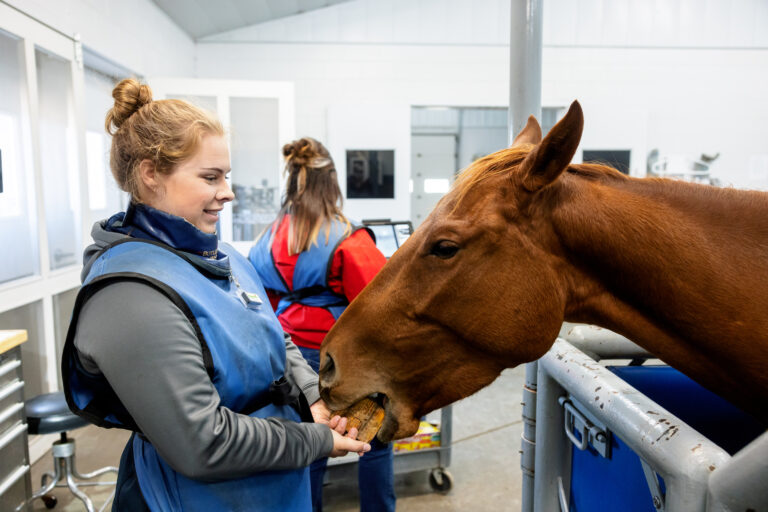
Equine intestinal illness might result from infectious agents, parasites, toxins or drugs. Diagnosis of the exact nature of the problem is important to help with resolution. Colic is the symptomatic outcome most often seen with a variety of intestinal orders, and colic and/or diarrhea can lead to a fatal conclusion.
Colic is reported to occur in 4.2% of horses each year, and it is the second-leading cause of equine death behind old age. A California study reviewed necropsy reports and medical records in four California Animal Health and Food Safety Laboratories over a period of 23 years—from January 1, 1990, to April 16, 2013—that related to intestinal-caused deaths [Macias-Rioseco, M.; Hil,l A.E.; Uzal, F.A. Fatal intestinal inflammatory lesions in equids in California: 710 cases (1990-2013). JAVMA Feb 15, 2020, vol. 256, no. 4, pp. 455 – 462; https://doi.org/10.2460/javma.256.4.455].
Lesions evaluated included enteritis, typhlitis, colitis, gastroenteritis, enterotyphlitis, enterocolitis, typhlocolitis, enterotyphlocolitis and enteropathy. Underlying causes of fatal intestinal lesions were categorized as bacterial, viral, parasitic, toxic or metabolic, mechanical (displacement, impaction, rupture or vascular compromise), allergic or immune-mediated, or undetermined. An infectious cause was then defined by the etiologic agent as determined through appropriate diagnostics.
Of the 1,503 animal reports evaluated in the study, 710 met the inclusion criteria that stipulated that death was attributable to a single underlying cause in one area of the gastrointestinal tract. Those with a combination of intestinal issues, pathology in nonadjacent intestinal segments, or death from non-intestinal causes were excluded. Lesions in all the horses affected at least one layer of intestine or stomach. Approximately 35% of horses in the study were adults, 26% were juveniles, 17% were foals or weanlings, and about 9% were neonates, with nearly 13% of indeterminate age.
The most common findings of intestinal pathology were present in 85.5% of the study horses:
- Colitis in 45.5%
- Enteritis in 20.6%
- Typhlocolitis in 19.4%
Neonates more commonly were afflicted with enteritis while other age groups were more commonly affected by colitis.
Underlying causes of fatal intestinal lesions included:
- Undetermined in about 66%, possibly due to knowledge gaps in available technology, diagnostic strategies, practitioner diagnostic ability, or combinations of these.
- Bacterial in about 24%—mostly Clostridium spp. and Salmonella spp.
- Mechanical in 4.4%
- Parasitic in 4%
- Toxic or metabolic in 2.1%
The cases dated back to the 1990s, which was a period lacking in many diagnostic procedures and strategies that became commonplace decades later.
In summary, while the majority of cases died from undetermined causes of intestinal disease, when the cause was identified, bacterial infection with Clostridium spp. or Salmonella spp. were the predominant findings. This finding could be useful to practitioners trying to pin down a source of an intestinal problem.








